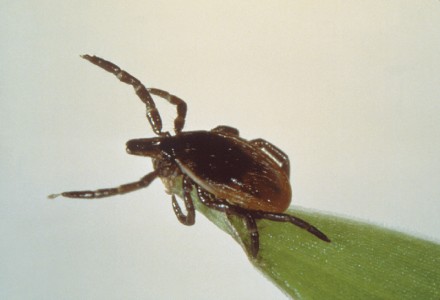
Deer Tick Facts
- Firstly, the eastern Deer Tick represents a potentially deadly species of arachnid. Also, the small creature frequently parasitizes numerous types of wildlife within its endemic range.
- This rather bothersome invertebrate represents a hard-bodied species of tick. Further, it derives its common name from its preference for various types of deer as its victim.
- Most notable among these appears to be the common white-tailed deer.
- This particular species of tick also occasionally parasitizes lizards, mice, and occasionally migratory birds. It further serves as a known carrier of several zoonotic diseases.
- Most notably, these include babesiosis, anaplasmosis, and the potentially life-threatening Lyme Disease.
Related Articles
Lone Star Tick Yosemite Cave Pseudoscorpion Tailless Whip Scorpion
Deer Tick Life Physical Description
First of all, the aptly named Deer Tick remains a physically rather small form of invertebrate. Yet despite this fact, the potential health threat it poses to animals and humans alike looms large.
But, mature adults only reach an overall body size of about 0.125 in (3.2 mm). However, when engorged with the blood of a victim, the abdomen can swell to many times its normal size.
Additionally, in color, this tiny but dangerous creature generally shows either black or dark brown on the body. But, the tiny legs, however, typically present a pure, deep black in color.
- Kingdom: Animalia
- Phylum: Arthropoda
- Class: Arachnida
- Order: Ixodida
- Family: Ixodidae
- Genus: Ixodes
- Species: I. scapularis
Deer Tick Distribution, Habitat, and Ecology
The bothersome Deer Tick also evolved as endemic to a rather wide range. This range includes both the northern and eastern midwestern regions of the United States, in North America.
Further, this invertebrate is quite adaptable. It typically inhabits regions of the dense forest, especially along trails. However, it easily inhabits any warm region with frequent animal or human activity.
In addition, the highly adaptable Deer Tick possesses a two-year life cycle, unlike many related species. During this cycle, it passes through three distinct stages; larva, nymph, and adult.
The progression from one stage to the next also seems to be triggered by feeding. Therefore, if the creature does not feed on the blood of a victim, it dies without progressing to the next stage of its life cycle.
After mating, adult females will feed on a host for several days. Following this, the female drops off and buries herself in the undergrowth of the forest floor for the winter.
Finally, in the spring, it will lay as many as two thousand eggs. In some regions, its numbers sometimes become quite gregarious.
Species Sharing Its Range
Cougar Greater Sage Grouse Colorado Columbine
Check out our other articles on Sensational Spiders Around the World, Red Panda, Cano Cristales, Telegraph Plant, Giant Oarfish, Leaping Lesbian Lizard, Bee Hummingbird

